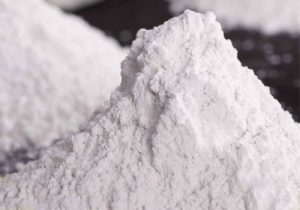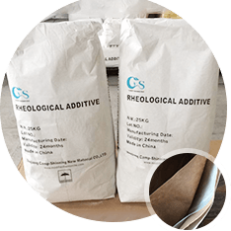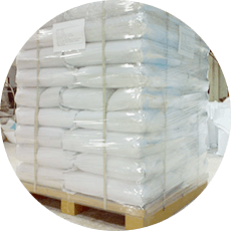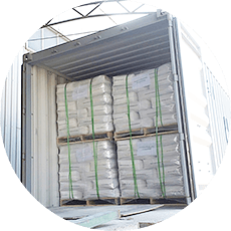Organiclay | Organoclay Applications
 Email: [email protected]
Email: [email protected]

Bentonite clay is modified with quaternary amines to produce organoclays.
Platelets of exchangeable cations naturally agglomerate in Bentonite clay.
A fatty quaternary amine is used to treat the clay after it has been diluted with a small amount of water, typically 5 milliliters.
Organoclay is the end result of an ion-exchange reaction with the resulting solution.
Organoclay can be used in a variety of ways.
It can be applied to a wide range of materials, from ceramic tiles to paint, as a protective layer.
Oil drilling fluids use it as a suspension agent as well.
The hydrophobic properties of Organoclay are its main selling point.
Hydrocarbons can be dissolved in water with the aid of this.
Clay becomes porous when this occurs.

There are many different types of bentonite clays, but one of the most common is organoclay.
Bentonite clay mineral is the raw ingredient, and the organic moieties that make it up are covalently linked to each other.
This type of surfactant has a nitrogen iron moiety and is known as “quaternary amines.”
In one end, Organoclay is hydrophobic, and in the other, it is hydrophilic.
Organoclay is a permeable barrier used in groundwater treatment.
Organic compounds and pollutants are filtered out by its chemical properties, which then reintroduce clean water into the environment.
Organoclay can be used in a variety of industries besides water treatment.
For example, some of its components are used to make plastics that are more resistant to fire.
Quaternary amines are used to modify bentonite clay by adding an aqueous solvent to the clay.
As a result, a clay with greater absorption capacity is formed.
Bentonite-based organiclay is a common ingredient in paint additives.
Natural crystalline substance with excellent paint compatibility.
Because it owns its own raw ore, Camp Shinning is able to keep raw material costs and delivery times to a minimum.
To further ensure the quality of its organoclay, Camp Shinning has made a significant investment in cutting-edge testing equipment.
There are a variety of products made by this company, including paint additives and oilfield fluid organophilic lignite.
Organoclay thickens solvent-based systems in an environmentally friendly manner.
In addition to being inexpensive and universal, it is widely used in paints and coatings.
High-DFT epoxy coatings, marine and industrial coatings, and heavy-duty anti-corrosion coatings can all benefit from its use.
Organoclay can be used in inks and polyester putty in addition to paints.
Organoclay
Mineral thickener is a powdered form.
More than half of the processing time is saved by using low shear forces for incorporation.
Compared to traditional organoclay rheological additives, this one has higher bulk densities and is better suited to oil-based systems.
Another benefit of this compound is that it has a long shelf life.
A wide range of chemical processes can benefit from its excellent dispersion properties.
An improved smectite-type clay known as organophilic clay thickener has been developed.
bentonite type clay and alkoxylated quaternary ammonium salt react to produce a unique organic cation that is unique to this product.
The clay is more effective than bentonite type clay because it is compatible with the natural oil system.
Organoclay is a rheological additive that increases the viscosity of various paints and coatings.
This highly versatile material disperses well and is compatible with low, mid, and high polarity systems.
Furthermore, it is suitable for a wide range of applications, including cast coatings, grease, and sealing compounds.
Organoclay is a bentonite clay organic derivative that works well as a rheological additive in oil paints.
This clay prevents pigment settling and improves the handling crispness of the paint.
It adds one to four percent of the weight of the paint and increases viscosity.
It is compatible with all types of solvents, unlike other rheological additives, reducing the need for a chemical activator.
Its advantages over previous additives include the ability to create novel color effects, improved concealment of surface defects, and improved weather durability.
Aside from these advantages, organoclay can be combined with organic or inorganic pigments to produce even more striking aesthetic effects.
Furthermore, when dried, it is highly transparent, making it a valuable addition for a variety of applications.
Organoclay is particularly useful in the production of clear coatings and paints.
Organoclay is a rheological additive that adds desirable properties to clear systems while maintaining their clarity.
This additive is commonly used in paint and coatings applications.
Organoclay improves the gloss of clear compositions as a rheological additive.
Because of its reactivity, clay is a highly versatile additive.
It can even improve the gloss of a clear product.
Organoclay is an organic bentonite clay derivative.
It is dispersed in paint and increases viscosity, preventing pigment from settling.
It’s also a great lightfastness agent.
It is used in paints and coatings because of these properties.
Furthermore, it enhances the overall quality of the paint and keeps it from separating.
It is a versatile additive that can be used in a wide range of applications, including water treatment.
Organic pigments have been used for a long time.
Plants were once known for their ability to stain fabric.
The deliberate use of plants to dye cloth resulted in a more deliberate pigment-creation process.
These substances are now mined and used in paints and cosmetics.
The color of these organic materials is determined by a variety of factors, including crystallite size and composition.
Organic pigments are more transparent and produce more vibrant colors.
Pigment can be produced by organoclay in two ways: adsorption and diffusion.
Organically modified bentonite clay can produce a variety of pigments depending on the chemical reaction.
For example, if the pigment is applied to plastic containers, organic clays can keep it in place, whereas a solvent-based system can keep the pigment in the liquid while also stabilizing emulsions.
Please send your message to us
*We will reply your inquiry to this Email as soon as we see it
Modified bentonite



